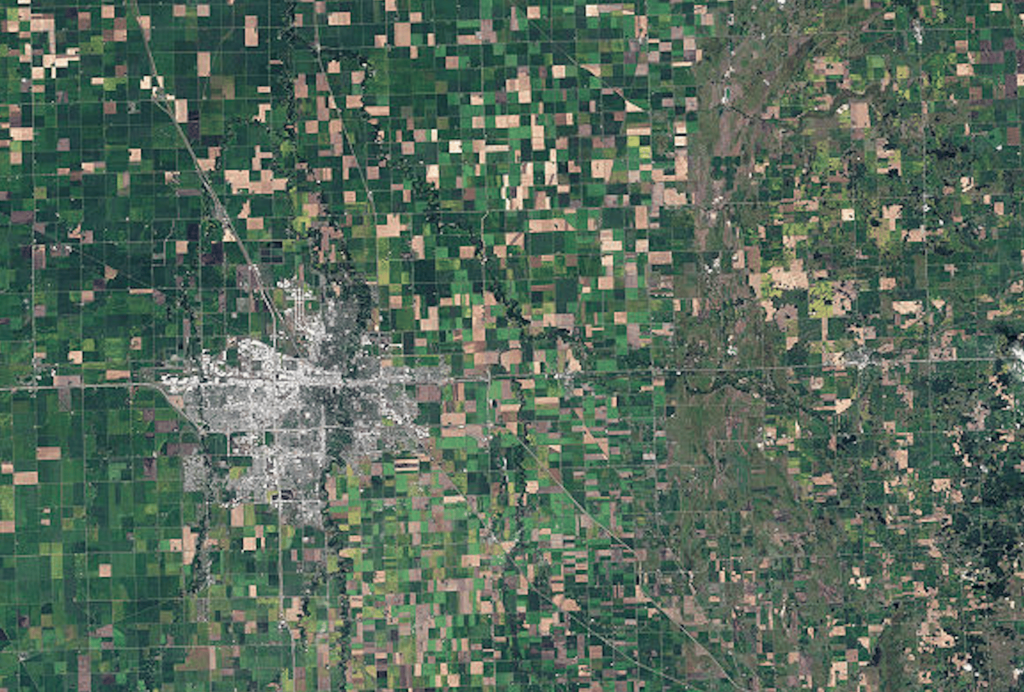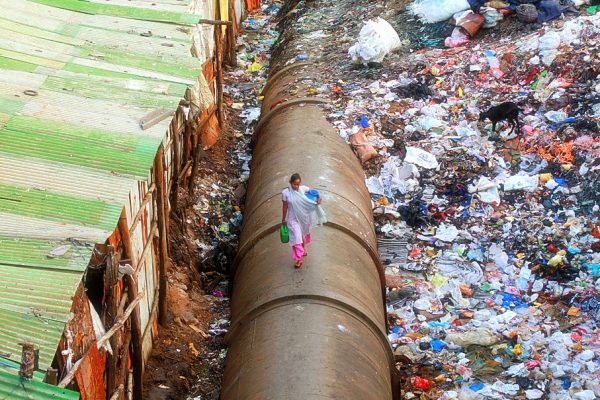Global Warming of 1.5°C
International Panel on Climate Change
A century ago in late October, a mutiny broke out in the Imperial German Navy. In Wilhelmshaven on the North Sea, hungry, demoralized sailors refused to follow orders in preparation for one last skirmish with the British for the sake of their officers’ vainglory. Unsure of the crew’s loyalty, the officers ordered the fleet to port in Kiel, but by November 4 the rebels had taken over the city and established a workers’ and soldiers’ council. Their cries for “peace and bread” reverberated throughout the empire, and over the following week revolutionaries captured a string of towns and provinces. On November 9 the red tide had swept over Berlin, forcing Kaiser Wilhelm II to abdicate and ushering in the end of World War I two days later.
The report is written in dull bureaucratic prose, but underneath the leaden jargon is a revolutionary document.
The November Revolution was swift because Germans had been starving for years thanks to the British blockade, as recent historical work has finally proven. But the success of the blockade depended upon German mismanagement. As a populous nation with an economy driven by industry rather than agriculture, Germany had been a major importer of foodstuffs and fertilizer before the war; it faced extreme shortages once fighting broke out. Yet, as detailed in economic historian Avner Offer’s study The First World War: An Agrarian Interpretation (1991), it could have achieved agricultural self-sufficiency had it abandoned animal husbandry. Dairy and meat production were extremely inefficient, then as now. As a visiting U.S. physiologist wrote in 1916: “Had the Germans been vegetarians, there would have been no problem. To the people of India, the ratio of grain to population would have constituted luxury. For people accustomed to eating a great deal of meat and animal products, the natural impulse was to cling as closely as possible to established habits.”
As liberal democracies wilt the world over, it may increasingly feel in the United States—and elsewhere—as though one lives in the Weimar Republic, but perhaps the more useful historical parallel is Wilhelmine Germany. The new special report released by the UN’s International Panel on Climate Change (IPCC), Global Warming of 1.5°C, hints at a dynamic not so dissimilar to that facing German leaders in 1914. Berlin realized that the market system could not rise to the challenge, so it devised Kriegssozialismus (“war socialism”), an unprecedented extension of government control over the economy—an experiment, it turns out, that greatly inspired the Bolsheviks. Surely climate change is as urgent as a world war, a comparison that has been made commonly enough by environmental writers. Both require governments to intervene in the market and citizens to adjust their behavior for the sake of solidarity. The IPCC compares these two measures to a third more drastic one: faith in unproven technologies to reverse climate change. These are to be the Wunderwaffen of late capitalism.
Climate change, like a world war, requires government intervention. Citizens must adjust their behavior for the sake of solidarity.
The new IPCC report marks a significant break with the mainstream consensus on climate change in three ways.
First, land scarcity emerges as its principal frame of analysis. This problem is so important that the IPCC has ordered another study dedicated solely to this issue, Special Report on Climate Change and Land. The forecast is bleak: over the course of the twenty-first century, as the global population balloons past ten billion, the Earth simply will not have enough land to expand production for crops, meat, dairy, forestry, biofuels, as well as for various schemes to reduce carbon dioxide, while simultaneously preserving biodiversity and safeguarding the food security of the world’s poorest people.
Second, the IPCC departs from the past thirty years of discourse on “sustainability” and green growth by implying that the economy must be constrained if there is to be a chance of keeping warming to 1.5°C above pre-industrial levels. (Indeed, the costs of climate change will be dear even for the world’s most powerful country, as the Trump administration’s quietly released second volume of the Fourth National Climate Assessment makes manifest. It estimates that the damages suffered by the U.S. economy will toll “hundreds of billions of dollars” every year by the end of the century.)
Third, the IPCC concedes that environmental policy based on “market mechanisms” has failed, deducing that there must be a return to direct governmental regulation.
The report is written in dull bureaucratic prose—and it pays obeisance to powerful interests in government and business—but buried underneath the leaden jargon is a revolutionary document.
• • •
It is a surprising but welcome development that the IPCC places omnivory at the center of its analysis of what is to be done. Animal industries devour land on a continental scale; no other industry so despoils the Earth’s surface. Yet, despite its outsized depredations, the livestock industry is a puny economic actor, accounting for a piddling few percentage points of global GDP and providing a product that can be easily substituted by plant proteins. And then there are its greenhouse gas (GHG) emissions. The numbers are contested, but the IPCC cites estimates that livestock accounts for 14.5 percent of total GHG emissions. That is on the low end among scholarly figures, which bunch around 18 percent; a 2009 report by the Worldwatch Institute, co-authored by environmental advisers to the World Bank, even estimates that it is closer to 50 percent. According to 2010 estimates, just 18 percent would make livestock the third-largest emitter of GHG pollution after electricity and heat production and industry, but ahead of transportation.
It is a surprising but welcome development that the IPCC places omnivory at the center of its analysis.
In the IPCC’s report, land use rivals GHG emissions as the primary metric. By this yardstick the livestock industry remains exceptional. Agriculture encompasses about half of the world’s inhabitable land mass, some 5 gigahectares (GHa). (To put this into perspective, Canada is a bit smaller than 1 GHa.) Of the total 5 GHa, 3.5 are used as pasture, leaving the remaining 1.5 as arable land. Yet a third of this arable land is used for animal feed and another fifth is used for biofuel crops. Thus humans directly enjoy the bounty from less than 1 GHa of farmland. By contrast, livestock require more than 80 percent of the global agricultural land area—4 GHa—but animal products contribute only 17 percent of calories eaten. Livestock’s share will only increase as the bourgeoisie in the Global South grows and mimics the carnivory of their Northern cousins. More forest will be cut down to make way for more ranches, and GHG emissions will increase—because deforestation destroys carbon sinks, and ruminant animals are methane expellers par excellence.
According to the report, a transition to a zero-carbon society will not come about quickly and therefore some form of carbon dioxide removal will be necessary. Of thirty-seven such measures, the IPCC’s speculative scenarios (“pathways”) depend overwhelmingly on two: either afforestation and reforestation (AR), or bioenergy with carbon capture and storage (BECCS), or some combination of the two. BECCS entails growing biofuels, such as miscanthus and eucalyptus, and burning them in a power station where emissions can be caught and sequestered underground. By comparison, AR is low-tech: just plant trees. Depending on the model, carbon dioxide removal could buy time to reverse global warming if there is an “overshoot” of the 1.5°C target for 2100—and of the ninety scenarios the IPCC studied that aim to reach that goal, eighty-one do overshoot before the end of the century. The scale IPCC imagines for carbon dioxide removal is massive. AR could take up to 0.97 GHa in one pathway and 2.8 GHa in another, swathes of the Earth that could come only from “land spared by diet shifts.”
BECCS remains an untested technology, so modelers do not foresee widespread implementation until the second half of the century, if at all. New research has cast the technology in a poor light, markedly dampening the IPCC’s enthusiasm for it since its last assessment report in 2014. As the IPCC notes, compared to AR BECCS “is more costly and much less mature a technology.” AR is cheaper, potentially as low as $5 per metric ton of carbon dioxide, compared to $200 per metric ton for BECCS. Indeed, some scientists doubt that the net effect of biofuel plantations would be to remove carbon dioxide from the atmosphere, since such tracts of land would likely have to displace forests (which consume carbon dioxide). By contrast, there are many possible benefits if AR is carried out by planting native flora because global biodiversity would be buttressed at the same time.
Technologies to remove carbon dioxide are to be the Wunderwaffen of late capitalism.
Bioenergy with carbon capture and storage may not be as reckless as solar geo-engineering (a controversy the IPCC sidesteps in this report), but it is still an extreme measure. It would surely spell disaster if not accompanied by a sharp decrease in demand for meat and ethanol-powered cars. Biofuels may eventually require 25 to 46 percent of arable land by 2100. Such a land grab would imperil the livelihoods of the poorest people, who would lose their land and face rising food prices. In all likelihood, this convergence of pressures would cause a crisis within a few decades that would make the spike in food prices in 2007 and 2008—which provoked social unrest across the world and was caused to a significant degree by biofuel policies—seem mild in comparison. Furthermore, because biofuel crops would be chosen for their fast-growing properties, an expansion of tree monocultures could cause more “biodiversity loss” than scenarios with a greater degree of climate change but less land-use change. Indeed, there is evidence that such destruction is already happening.
And it is far from clear whether it is possible to safely sequester carbon dioxide underground, especially on a massive scale; while some studies have shown a low risk of asphyxiation due to leakage, groundwater contamination remains a concern. The IPCC cites estimates that only about 70 percent of stored carbon dioxide would be retained after 10,000 years. In the end, the panel sanctions the use of BECCS only as a last resort. Asceticism, planning, and afforestation emerge as the IPCC’s preferred approaches.
• • •
Twenty-first century planetary management is not so dissimilar from classical economics as it was studied two centuries ago.
The second major issue that the report raises is the curtailment of economic growth. The IPCC’s studies evaluate trade-offs between different uses of land. In this way twenty-first century planetary management is not so dissimilar from classical economics as it was studied two centuries ago.
Classical economists assumed that as population increased, growth would slow as more marginal agricultural lands were put into production—eventually reaching what Adam Smith called a “stationary state,” a point at which the addition of an additional hectare of land would not be worth the labor to farm it. This was not a very distant fate, as he estimated two centuries were “as long as the course of human prosperity usually endures.” David Ricardo countered such pessimism by arguing that free trade offered a means of evading the limits to growth posed by finite acreage because Britain could indirectly use the land of unindustrialized countries. Using Smith’s term for economic growth, the “progressive state,” William Stanley Jevons thought coal could extend such a period, but not for long. As Timothy Mitchell has shown in Carbon Democracy (2011), economics’ well-deserved reputation as the “dismal science” was shed only after World War II when Keynesians tracked monetary flows rather than physical goods, but their airy representations were built on the foundation of cheap petroleum. Thus, it was only a few generations ago when the notion of limits to growth was finally banished from economics, allowing neoclassical practitioners such as Robert Solow to reduce energy to a mere “residue” in economic models.
It seems likely that the end of the petroleum era, scheduled by the IPCC to occur in the latter half of this century, would inaugurate a new era of natural limits. This shift is, in the end, unavoidable, if not immediately forthcoming, since the energy sources of the biological ancien régime—wood, sun, wind, and water—can be tapped only as “flows” rather than “stocks,” to use the terms of environmental historian Andreas Malm. The IPCC does not trumpet the demise of growth in its new report; instead it cloaks its radicalism in the seemingly innocent phrase “demand reduction.” In truth, it would be hard to overstate the magnitude of such a social transformation: everyone needs to use less in the future by living in a “passive” house that does not use energy for heating or cooling, inhabiting a well-planned town with public transportation, and abstaining from meat and dairy. “These results show,” the report concludes, “that 1.5°C-consistent pathways can be identified under a broad range of assumptions, but that lack of global cooperation, high inequality and/or high population growth that limit the ability to control land use emissions, and rapidly growing resource-intensive consumption are key impediments.”
The end of the petroleum era, scheduled by the IPCC to occur in the latter half of this century, may inaugurate a new era of natural limits to economic growth.
To create a “negative-emissions” society, certain industrial sectors must shrink while others blossom. A transition would require massive financing, which one could call a “Green New Deal” even if the IPCC doesn’t—though this would be less “green growth” than environmentalist retrenchment. The IPCC recognizes that “in the ordinary course of business, these [financial] transitions may not be expected” and stresses the need for state-directed investment. Not only the fossil-fuel industry but also meat companies, automobile firms, and real estate developers would be burdened with “stranded assets.” The IPCC camouflages its spartan diktat by speaking wistfully of “decoupling” economic growth from GHG emissions, but it cites only 2015 and 2016 as examples of when this might have occurred. The slight gap between growth and energy use in those years, the IPCC admits, does not suffice, and “a longer data trend would be needed before stable decoupling can be established.” In the long term the IPCC fantasizes an improbable decoupling whereby global GDP expands more than threefold between 2010 and 2050 but “end-use” energy consumption (including in buildings, transportation, and industry) would be contained to only a 30 percent increase. Such a decoupling would be thin gruel to the capitalist, but it is more likely the environmentalist who will be left hungry.
• • •
Capitalism’s insouciance toward land scarcity and climate change has forced the IPCC’s scientists to embrace planning, which marks the third major breakthrough of the new report. This new posture represents a striking reversal of decades of market environmentalism, with its putative “win-win” solutions. It is skeptical of these approaches, such as the United Nations’ REDD+ program, which promotes countries’ efforts to reduce emissions from deforestation and forest degradation: “Although payments for reduced rates of deforestation may benefit the poor, the most vulnerable populations could have limited, uneven access and face lower opportunity costs from deforestation.”
The IPCC cloaks its radicalism in the seemingly innocent phrase “demand reduction.”
Strikingly, in this new report the IPCC refused to use “cost-benefit” analysis, long a mainstay of environmental economics, on the basis that many aspects of climate change cannot be quantified. While the IPCC still calls for a price on carbon, it suggests prices so laughably high—say, as much as $14,300 per metric ton by 2050—that they would amount to a de facto ban. More importantly, the IPCC emphasizes that governments should mandate stricter efficiency standards for appliances, building codes, and vehicles. The report also considers a ban on new coal-fired power plants, carbon-neutral building codes by 2020, and “stringent policy actions” to reduce reliance on cars. It doubts the environmental friendliness of electric cars and counsels that car use be minimized by encouraging “walkable cities.” The IPCC scolds modelers for not taking urban planning seriously as a tool and encourages them to incorporate “effective planning (including compact city measures) and integrated regulatory frameworks.” Designing cities better could reduce GHG pollution from transportation by half. The sum of these proposals represents a return of long-denigrated “command-and-control” regulation after the hegemony of market-based environmental policy, such as cap-and-trade, since the 1990s.
The IPCC knows what its enemies look like. It notes that people who believe in “individual autonomy” and “free-market ideology” are less likely to believe in climate change. It also is aware that “a capital-oriented culture tends to promote activity associated with GHG emissions.” It refers to work that identifies some ninety industrial firms as responsible for the lion’s share of greenhouse gas pollution. Other foes include “vested interests” and “industry group lobbying” that may block environmental reforms. “In all countries,” the IPCC warns, “building codes can be undermined by industry interests, and can be maladaptive if they prevent buildings or land use from evolving to reduce climate impacts.” To achieve effective city planning it is necessary, the IPCC counsels, to overcome “the financial, institutional, behavioral and legal barriers to change.”
Capitalism’s insouciance has forced IPCC scientists to embrace planning, suggesting a return of “command-and-control” regulation after the hegemony of the market.
Yet, given its focus on the problem of livestock, it is surprising that the IPCC stops short of outlining how exactly demand for animal products could be constrained. If one extends its command-and-control logic, then rationing or bans would look to be the most effective tools. Such approaches seem more practical than quixotic schemes of feeding algae to livestock to relieve land scarcity or modifying the microbiota in animals’ rumen to reduce methane emissions, which so far have failed to achieve any results. Like afforestation and reforestation, restrictions on meat and dairy could be put into effect immediately, smoothing the transition to a post-carbon society. “Every year’s delay before initiating emission reductions,” the IPCC warns, “reduces by approximately two years the remaining time available to reduce emissions to zero on a pathway remaining below 1.5°C.”
• • •
The Germans courted disaster because they did not want to eat dal.
Like the IPCC, Imperial Germany’s war planners were not oblivious to the problem of meat. They realized that the country’s shortage of land was more apparent than real, predicated as it was on the extravagances of bacon and butter. Only a few months after World War I had started, the German government set up the Eltzbacher Commission to investigate its agricultural position. Paul Eltzbacher, a jurist specializing in the anarchist movement and later a Bolshevik sympathizer, counseled the government to minimize the size of the livestock industry, especially pigs, who had been demonized as “co-eaters” (Mitfresser). The great “pig massacre” (Schweinemord) of 1915 decimated the number of pigs by a third, yet the government struggled to clamp down on livestock production. Farmers, disgruntled with price controls, secretly fed grain to animals, whose flesh garnered lucrative prices on the black market.
Technocracy was thus defeated by consumers unwilling to change their tastes and recalcitrant farmers pursuing personal profit over national food security. The Germans courted disaster because they did not want to eat dal. As the food system deteriorated, Germany’s impresarios of military science—the two Erichs (Falkenhayn and Ludendorff)—resorted to brutal high-tech gambles to bring the conflict to an end, including chemical weapons, zeppelin bombardments, and submarine attacks on civilian ships. These are the wartime equivalents of geo-engineering and BECCS.
No matter how clever their plans, technocrats—whether IPCC scientists or the German General Staff—tend to fail because they cannot rally a mass movement to support their goals. It is necessary for grassroots leftist movements to take up technocratic blueprints, give them a radical democratic foundation, and realize them through mass mobilization. Kriegssozialismus needs real socialists.
Change will come. The question is, will humanity confront it with a plan and share the burden—or will the purse and the sword decide?
Unfortunately, too often leftist thinkers claim that only a few tweaks or perhaps new technology will suffice to deal with the crescendo of environmental crises. The IPCC report makes clear that this is not enough. Ways of life will be upset; some workers must move into new industries, and yes, eat less meat. No matter what happens, truly wrenching, painful change will come. The question is, will humanity confront it with a plan and share the burden, or will the purse and the sword decide? Climate change, like a world war, is no ordinary crisis; the stakes are as high as can be. Effective solutions are at hand—a humane and sane transition could begin tomorrow—yet it seems more likely that the instinct of the gut will prevail over the mind’s most detailed plans, and profit will prevail once again over prudence. Some solace may be found in the perverse optimism of the Great War’s revolutionaries: the worse the better.








